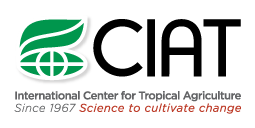by ciatreport2015 | Apr 21, 2016 | Innovation
CIAT has started the sequencing of the first entire global crop collection and scientists are about a year away from defining cassava’s pan-genome, although there’s still another 5,000 varieties of the 6,643 to complete the picture. Thanks to next-generation...

by ciatreport2015 | Apr 15, 2016 | Innovation
The lack of tools to rapidly assess and visualize how landscapes and related ecosystem services will be altered by climate change is a serious challenge. Using high-resolution imagery from Google Earth, this new approach engages communities to learn how they access...

by ciatreport2015 | Apr 15, 2016 | Innovation
5Q asks five questions at regular intervals to each stakeholder group, rapidly analyzes responses, and assesses necessary adjustments. By making the process responsive and effective, and by ensuring mutual accountability and integration of stakeholders in a new way,...

by ciatreport2015 | Apr 13, 2016 | SDGs
Terrestrial ecosystems are more important than ever to meet the world’s food needs. That’s why CIAT works to improve soil management from farm plots to whole landscapes to ensure that ecosystem services provide the benefits that are essential for sustainable...

by ciatreport2015 | Apr 13, 2016 | SDGs
Climate change is arguably the biggest threat facing humanity. With a historic agreement concluded at COP21 in Paris, international cooperation will focus on preventing, adapting to, and mitigating the effects of this major global issue. Through the CGIAR Research...





